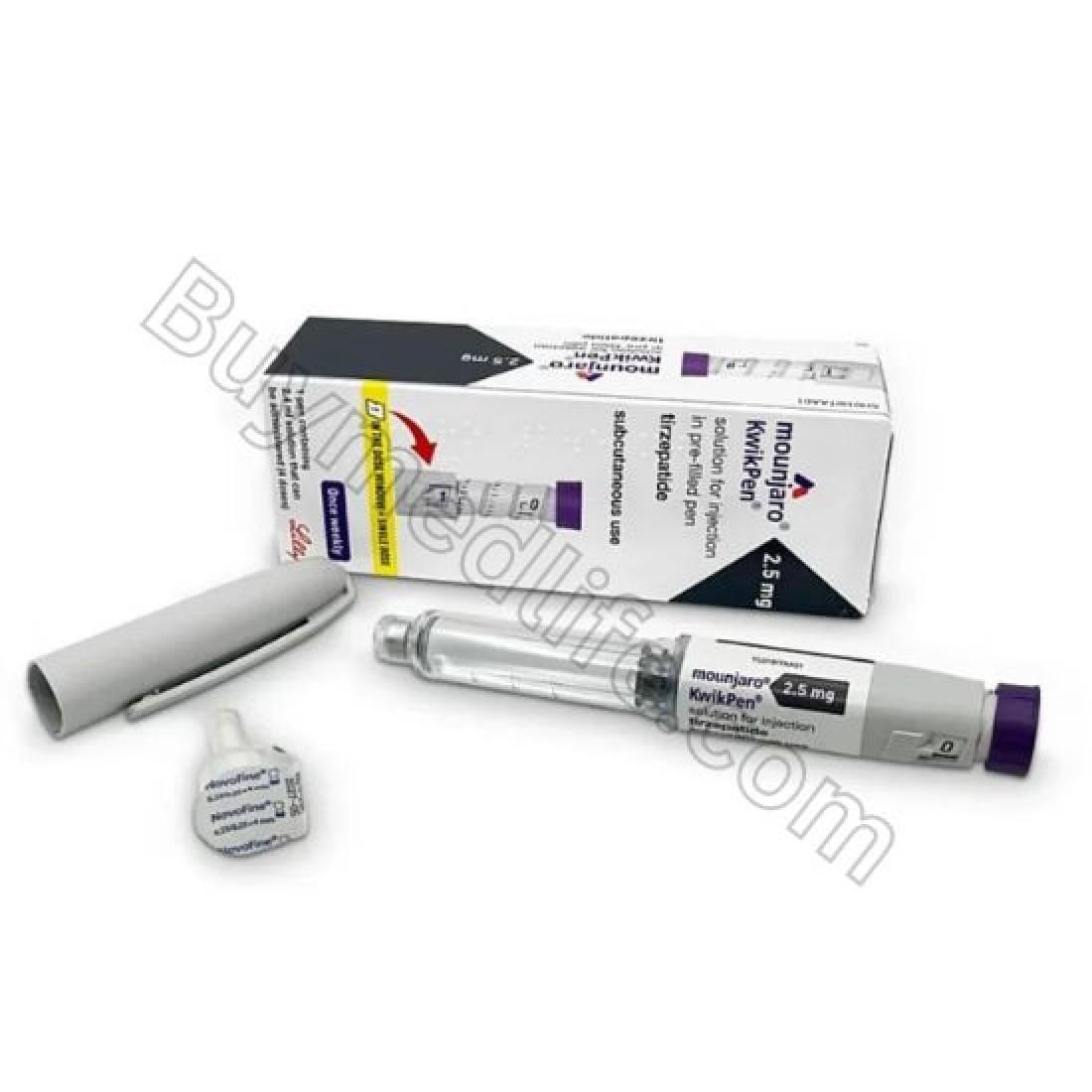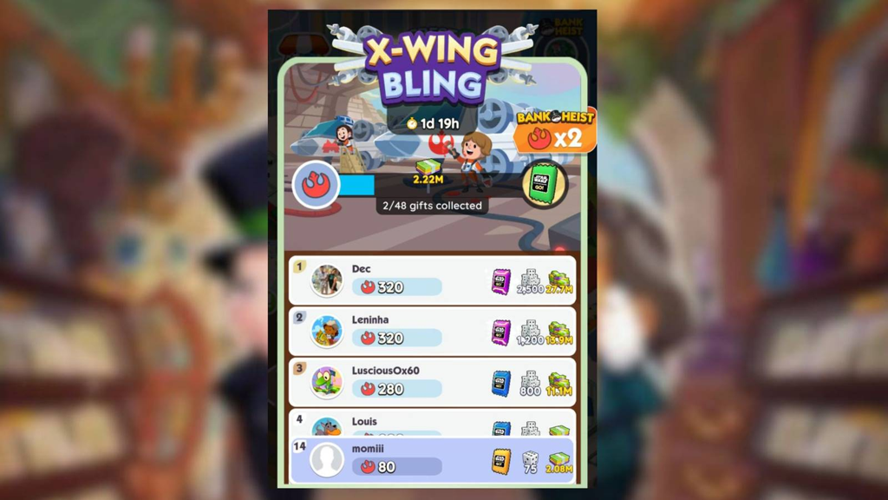Participar
Iniciar sesión RegistrarseEventos
Blogs
Marketplace
Grupos
Páginas
Más
Mounjaro 2.5 mg Not Working: Troubleshooting Initial Lack of Response

Mounjaro KwikPen 2.5 mg has become one of the most effective medications for type 2 diabetes management and medically supervised weight loss. But many new patients experience confusion or frustration when they start on the 2.5 mg dose and don’t see immediate changes.
If you feel like “Mounjaro 2.5 mg is not working”, you are not alone. The starting dose is designed for tolerance development, not major therapeutic results. Understanding why responses vary—and how to troubleshoot early challenges—is essential for long-term success.
This detailed guide explains:
✔ Why the 2.5 mg starter dose may feel ineffective
✔ Expected timelines for both weight loss and glucose control
✔ Common reasons for slow or no response
✔ What to do when you think Mounjaro is not working
✔ When to talk to your doctor about dose escalation
Let’s break it down.
1. Why Mounjaro 2.5 mg Often Feels Like It’s “Not Working”
The 2.5 mg dose is not a therapeutic dose.
It is a starter dose used solely to:
-
Allow your body to adjust to tirzepatide
-
Reduce gastrointestinal side effects
-
Prepare for higher, effective doses
This dose rarely produces major results in weight or blood glucose. That is intentional.
Most patients will not see full benefits until they reach 5 mg, 7.5 mg, or 10 mg doses.
What the 2.5 mg dose DOES do
-
Starts activating GLP-1 and GIP receptors
-
Slows gastric emptying slightly
-
Reduces early hunger for some individuals
-
Begins balancing blood sugar
What it DOES NOT do
-
Produce large, rapid weight loss
-
Dramatically lower A1C
-
Create consistent appetite suppression
-
Act as a therapeutic dose for diabetes
So if results seem minimal in the first 4 weeks, this is normal—not a sign that Mounjaro failed.
2. Expected Timeline: When Should Results Begin?
Understanding timelines can prevent frustration.
2.1. Blood Sugar Improvements
Most patients notice improvements by:
-
Week 2–4 for fasting glucose
-
Week 4–8 for post-meal glucose
-
2–3 months for A1C reduction
The 2.5 mg dose may create subtle improvements, but therapeutic changes often require dose escalation.
2.2. Weight Loss Results
Most users see:
-
0–4 lbs average weight loss in month 1 (2.5 mg phase)
-
4–12 lbs by month 2–3 (5 mg and above)
-
Significant fat loss after reaching 7.5 mg or higher
Many studies show major weight loss begins after dose increases, not during the starter dose.
3. Common Reasons Mounjaro 2.5 mg Seems Ineffective
If you feel no changes, one or more of the following factors may be involved.
3.1. The Starting Dose Is Too Low for Therapeutic Effect
This is the #1 reason.
2.5 mg is intentionally small. Your body must build tolerance before receiving therapeutic doses.
3.2. Your Body Needs More Time
Every metabolism is different. Some individuals are slow responders, especially if they have:
-
Insulin resistance
-
PCOS
-
Hypothyroidism (treated or untreated)
-
Chronic inflammation
-
Previous GLP-1 agonist use
Your timeline may simply be different, not delayed due to failure.
3.3. You Switched From Another GLP-1
If you recently used:
-
Ozempic (semaglutide)
-
Wegovy
-
Saxenda
-
Victoza
-
Trulicity
your GLP-1 pathways may already be partially saturated. The body may respond more slowly to tirzepatide at the starting dose.
3.4. Lifestyle Choices Are Masking Benefits
Certain habits can blunt early responses:
-
High sugar intake
-
Frequent alcohol consumption
-
Large portion sizes
-
Inadequate protein
-
Poor sleep
-
Chronic stress
Because the 2.5 mg dose is mild, lifestyle factors influence its early effects more strongly.
3.5. Incorrect Injection Technique
Improper injection technique reduces absorption.
Missteps include:
-
Injecting into scar tissue
-
Injecting too shallow
-
Not rotating injection sites
-
Using expired or improperly stored pens
These small errors can affect the medication’s effectiveness.
3.6. Medical Conditions Delaying Results
Your body may be resistant if you have:
-
Cortisol elevation (chronic stress)
-
Thyroid imbalances
-
Metabolic syndrome
-
Severe insulin resistance
-
Hormone fluctuations (menopause, PCOS)
These conditions can slow early response.
3.7. Expectations Are Too High for the Starter Phase
Many TikTok videos create unrealistic expectations. The truth is:
The first month is for tolerance—not transformation.
4. How to Troubleshoot When Mounjaro 2.5 mg Seems Not Working
Here are the best strategies to improve response during the starter phase.
4.1. Assess Your Appetite Signals
Tirzepatide works by:
-
Reducing hunger
-
Slowing gastric emptying
-
Increasing satiety hormones
If you still feel hungry often, don’t panic. For many, appetite suppression begins after titration.
Try these approaches:
✔ Eat slowly
✔ Focus on protein-rich meals
✔ Reduce ultra-processed foods
✔ Drink water before meals
Even small changes help enhance early response.
4.2. Track Blood Glucose Patterns
For diabetes patients:
-
Test fasting glucose daily
-
Test 1–2 hours after major meals
-
Track weekly averages
You may notice trends even if the day-to-day is inconsistent.
4.3. Keep a Weekly Progress Journal
Track:
-
Appetite
-
Cravings
-
Energy levels
-
Bowel patterns
-
Sleep quality
-
Mood
-
Weight
Non-scale benefits often appear before weight changes.
4.4. Improve Injection Technique
Ensure:
✔ You inject into approved sites: abdomen, thigh, upper arm
✔ You rotate injection zones weekly
✔ Pens are refrigerated but not frozen
✔ Injection is subcutaneous, not intramuscular
This improves drug absorption.
4.5. Cut Back on Sugar and Liquid Calories
Sugar and refined carbs blunt hormonal pathways.
Avoid:
-
Sweet drinks
-
Alcohol
-
White bread
-
Pastries
-
Juice
-
Candy
These foods can overpower the mild dose of tirzepatide.
4.6. Increase Hydration
Slowed digestion requires more hydration to work efficiently.
Aim for:
-
2.5–3 liters daily (unless medically restricted)
4.7. Add Gentle Movement
You don’t need intense workouts. Start with:
-
20 minutes of daily walking
-
Light strength training
-
Stretching
-
Yoga
Exercise enhances insulin sensitivity, improving Mounjaro’s effectiveness.
5. When Should You Increase the Dose?
Typically, most doctors increase the dose from 2.5 mg → 5 mg after 4 weeks unless:
-
Side effects are severe
-
You are not tolerating injections well
-
You have specific medical conditions that require slower titration
Most patients begin experiencing noticeable changes once they reach 5 mg or higher.
6. Signs That You Are Ready for 5 mg
You may be ready to increase your dose if:
✔ Side effects are mild
✔ You feel no nausea or vomiting
✔ You feel minimal appetite changes
✔ Blood glucose is unchanged
Dose escalation is the standard next step.
7. When to Call Your Doctor About Lack of Response
Contact your healthcare provider if:
-
You see no improvement after 8–12 weeks
-
Weight remains unchanged after dose escalation
-
Your appetite feels completely unchanged
-
Blood glucose rises unexpectedly
-
Side effects worsen instead of improve
Your prescriber may adjust your:
-
Dose
-
Injection day
-
Lifestyle plan
-
Medication combination
Or explore whether another condition is interfering with results.
8. Medical Conditions That Mimic Lack of Response
Sometimes, the issue isn’t Mounjaro—it’s an underlying condition.
8.1. Hypothyroidism
Even treated hypothyroidism can slow fat loss significantly.
8.2. Insulin Resistance or PCOS
These conditions require time for hormonal adaptation.
8.3. Menopause or Perimenopause
Estrogen fluctuations impact appetite and fat distribution.
8.4. Medications Affecting Metabolism
Examples include:
-
Steroids
-
Antidepressants
-
Beta blockers
-
Antipsychotics
These may delay the benefits of tirzepatide.
9. What If You Truly Don’t Respond to Mounjaro?
A small percentage of people experience limited response due to genetic differences in incretin receptor sensitivity.
For these patients, doctors may recommend:
-
Higher tirzepatide doses
-
Switching to another GLP-1/GIP medication
-
Adding metformin or insulin
-
Specialized metabolic testing
Most people respond well after titration—but a small minority may need alternative treatments.
10. Realistic Expectations for Month 1
Most users experience:
Month 1 (2.5 mg)
-
Mild appetite suppression
-
Small or no weight loss
-
Better blood sugar in some
-
Occasional nausea or constipation
Month 2 (5 mg)
-
Noticeable appetite reductions
-
Weight loss begins for many
-
Better post-meal glucose patterns
Month 3–4 (7.5 mg–10 mg)
-
Strong appetite suppression
-
Consistent weight reduction
-
Significant A1C reduction
The starter dose is simply the beginning—not the measure of success.
Conclusion: Mounjaro 2.5 mg Not Working? It’s Normal.
If Mounjaro 2.5 mg seems ineffective, remember:
✔ It is not a therapeutic dose
✔ Most benefits appear after dose increases
✔ Early results vary widely
✔ Lifestyle choices can magnify or blunt early effects
✔ Proper injection technique and consistency matter
✔ Medical factors may influence early response
The first month is about preparation, not perfection.
If you feel discouraged, you’re not failing—your body is adjusting.
If you want, I can also create:
✅ A short version
✅ A social-media summary
✅ A FAQ section
✅ A comparison


